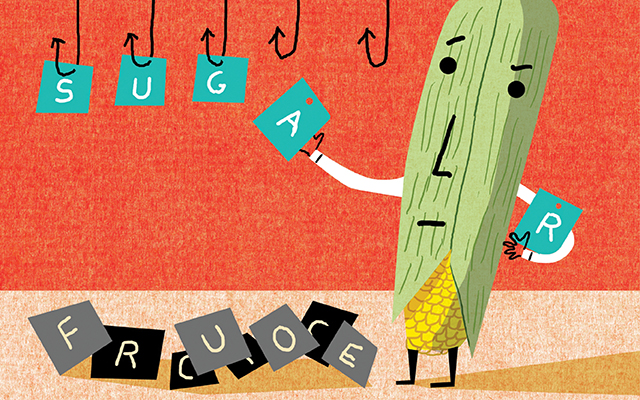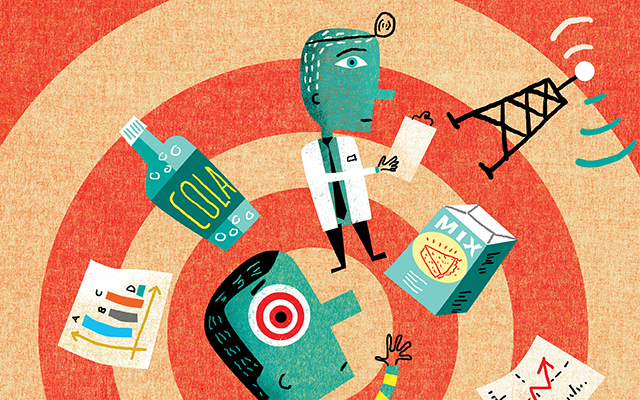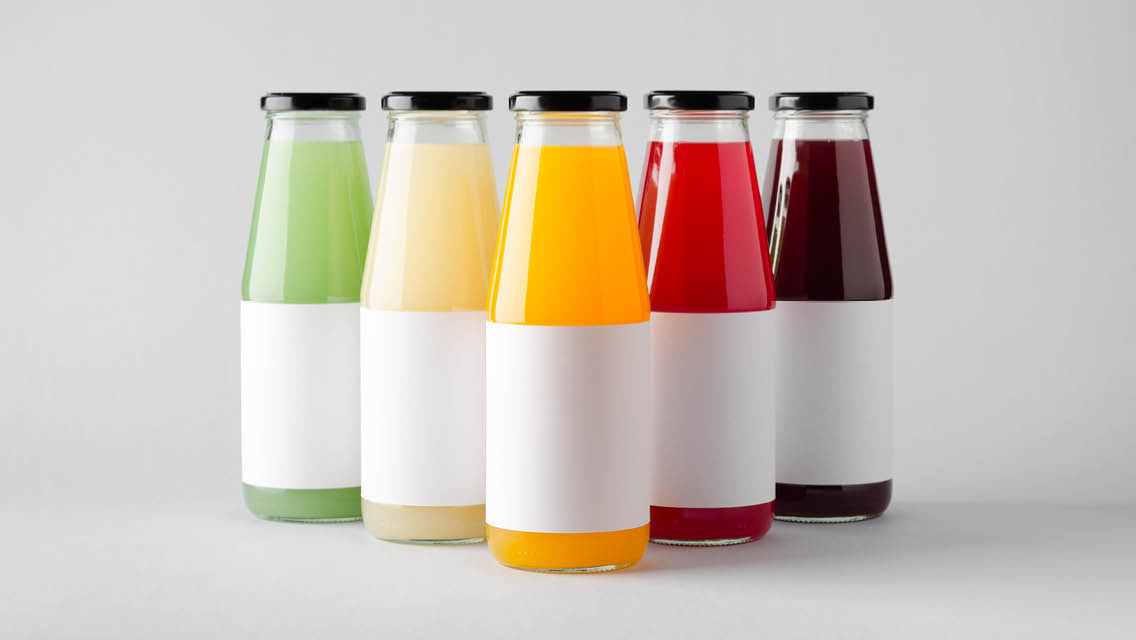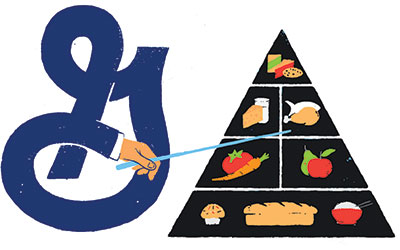In January 2012, health reporter Tara Parker-Pope wrote a cover story for the New York Times Magazine titled “The Fat Trap.” The 5,500-word article, packed with pedigreed sources, explored the science of weight loss. Its conclusion? For most obese people, permanent weight loss is a pipe dream.
The piece was widely disseminated — this was the Times, after all. It was broadcast on radio stations and television news reports, and big media outfits like National Public Radio and the Huffington Post interviewed Parker-Pope herself to spread the once-fat-always-fat message.
There was just one problem, though. The article, according to David H. Freedman in the Columbia Journalism Review (CJR), was “dead wrong”: “Many, if not most, researchers and experts who work closely with the overweight and obese would pronounce [it] . . . misleading in a way that could seriously . . . damage the health of millions of people.”
In the days after the article appeared, many experts did indeed point out a number of major problems in it. These issues included the fact that the key study she cited required people to basically starve themselves, which, as CJR pointed out, “has long been known to produce intense food cravings and rebound weight gain.” Even worse, Parker-Pope made no mention of insulin, the primary hormone involved in fat storage. This glaring omission prompted a petition letter to the Times editor, signed by more than 250 medical experts, stating that “her article omits several major issues that are critical to understanding the obese condition, and its cure and prevention.” (You can read the entire petition at IPetitions.)
The damage had already been done, however. Despite the experts’ public outcry, the headline health news spread like a disease via the Internet, helped along by tweets, likes, and pins. The end result? Many people around the world now believe in the misguided once-fat-always-fat message.
Frankly, even the most discerning readers absorb health information riddled with errors. A 2008 study by University of Minnesota professor Gary Schwitzer examined 500 news stories on health and found major flaws in about two-thirds of them. Many readers, Freedman writes, never hear about these flaws because too many health journalists uncritically accept “what scientists hand them — or worse, what the scientists’ PR departments hand them.”
Take last year’s study reported by Reuters Health with the headline “Breakfast cereal tied to lower BMI for kids.” It allegedly shows that children who eat cereal — including Frosted Flakes — weigh less and get more vitamins than those who eat other foods or nothing for breakfast. Left out of the story, however, was any real comparison between the kids who eat Frosted Flakes and the kids who eat, for example, scrambled eggs. At the very end of the article is a lone contrary voice — but how many readers actually get past the headlines these days, much less click on them and scroll all the way down to the end of articles? (For even more on deciphering health studies, see “A Study in Confusion“.)
Given the flaws with many medical studies, Freedman concludes, there is an inherent problem with most health journalism: “A reporter who accurately reports findings is probably transmitting [inaccurate] findings. And because the media tend to pick the most exciting findings from journals to pass on to the public, they are in essence picking the worst of the worst. Health journalism, then, is largely based on a principle of survival of the wrongest.”
It’s no wonder, then, that most of us are confused. Combine this with dubious ads from the food industry — and the fact that some media outlets may not want to alienate food companies that advertise with them — and we end up with even more muddled information. Overwhelmed, frustrated, and resigned, many of us throw up our hands and eat whatever we want.
The good news, however, is that understanding where biased health information comes from can help us sift through the latest headlines and become more intelligent news consumers and smarter shoppers.
To help us play defense against these headlines, we turned to Michele Simon, JD, MPH, a public-health lawyer who is president of Eat Drink Politics, a corporate watchdog and consulting firm. She is also the author of the seminal Appetite for Profit: How the Food Industry Undermines Our Health and How to Fight Back. Here’s what Simon had to say about discerning fact from fiction when it comes to the food industry’s “health” claims.
— Anjula Razdan, Experience Life Senior Editor
 Illustrations by James Yang
Illustrations by James YangWhen the Centers for Disease Control and Prevention recommended in 2011 that children and teenagers drink less soda to reduce their risk of obesity, it bolstered the advice with ample research showing the correlation between overconsumption of sugary beverages and increased risk of health problems. Nevertheless, scientist David Allison, PhD, claimed that there was still no real “solid evidence” linking soda with obesity. Allison’s pooh-poohing of the warning caused a dramatic stir in the media. After all, he was head of the obesity research center at the University of Alabama and president-elect of the Obesity Society, a scientific organization comprising 2,000 researchers, clinicians, and educators.
Why would a respected dietary researcher make a claim that so categorically contradicted the accepted scientific consensus? Allison’s critics point to the research money he pocketed from PepsiCo, Coca-Cola, and the national soda-lobbying group, the American Beverage Association, as the most likely explanation. Still, a host of others defend Allison, saying his research is sound and he is being attacked because he is a thorn in the side of public-health experts who want to bolster their own cause.
Regardless of Allison’s core motives, it’s important to understand that the food and beverage industries constantly pay scientists to conduct research on their behalf and then release the often glowingly positive results without disclosing the obvious conflict of interest. This is just one way both the media and the public get confused into believing, for example, that there is no connection between drinking soda and weight gain.
Many scientists are tempted by the food industry’s offers of lucrative consulting deals, speaking fees, all-expenses-paid trips, and other financial enticements. In defending themselves, researchers usually deny that the source of their funding had any influence on their research design or their findings.
This is often not true. In the case of soda, a team led by Harvard professor David Ludwig, MD, PhD, published a review of selected nutrition papers regarding soft drinks. They found that more than half of the 206 papers were at least partially paid for by the beverage industry. They also found that the studies funded by beverage companies were four to eight times more likely to advance the industry’s economic interests than studies done without corporate funding. “If the science base is compromised by conflict of interest, that’s a top-order threat to public health,” Ludwig concluded.
All of these tactics are straight out of the tobacco industry’s playbook. And paying off scientific experts is just one way companies try to sow seeds of doubt in the consumer’s mind. Here are a few other things to watch out for.
Health “Institutes” and “Councils”
 Illustrations by James Yang
Illustrations by James YangThe names sound important; the research they present is impressive, if surprising. The Beverage Institute for Health and Wellness aims to be a “resource for health professionals on the science of beverages, hydration, and active healthy living.” But dig a little deeper and you’ll discover the institute is brought to you by Coca-Cola.
The Bell Institute of Health and Nutrition reports that its staff of scientists and registered dietitians “has a strong commitment to communicating health and nutrition information.” As it turns out, the cereal giant General Mills is behind the effort. Other organizations providing public “information” are the Gatorade Sports Science Institute and the Nestlé Nutrition Institute.
Food corporations attempt to manipulate public perception by creating and bankrolling “science organizations” that are really front groups paid to promote their products and agendas. Organizations such as the American Council on Science and Health and the International Food Information Council, for example, present themselves as legitimate scientific sources furthering the public interest. In reality they are creations of multimillion-dollar corporate funders.
A good rule of thumb? Be suspicious of any group with the word “council” or “institute” in its name. The mission behind such organizations is often to make you believe that it’s affiliated with a government agency.
“Health” Organization Miseducation
 Illustrations by James Yang
Illustrations by James YangIn 2005 the American Diabetes Association (ADA) allowed Cadbury Schweppes, then the manufacturer of Dr Pepper, A&W, 7 UP, and other soft-drink brands, to display the ADA’s logo on diet sodas as part of a $1 million “alliance.” The ADA promoted the partnership as an educational campaign, convincing consumers to drink aspartame-sweetened beverages rather than high-calorie, sugary ones. As one of the world’s leading soft-drink companies and candy makers, Cadbury Schweppes continued selling sugary drinks and snacks that — by the campaign’s own reasoning — exacerbated obesity and type 2 diabetes. That contradiction didn’t bother the ADA’s chief medical and scientific officer, Richard Kahn, PhD, who claimed: “There is not a shred of evidence that sugar, per se, has anything to do with getting diabetes.”
Consumers expect public-interest groups to cut through the food-industry propaganda and educate the public with factual, no-nonsense nutrition information. Sadly, even respected groups like the ADA and the American Heart Association have formed “alliances” with the food industry.
In 2013 I reported that the Academy of Nutrition and Dietetics (formerly known as the American Dietetic Association — the world’s largest trade group of nutrition professionals) was offering courses sponsored by the food industry. Through the academy, registered dietitians earn continuing-education credits taking classes funded by Kraft Foods, the National Cattlemen’s Beef Association, ConAgra Foods, General Mills, and PepsiCo. Under Coca-Cola’s tutelage, nutrition professionals are taught that sugar is not a health problem for children; that aspartame is completely safe, including for children over one year; and that the Institute of Medicine is too restrictive in its school nutrition standards. And, for a $50,000 contribution, the academy allowed Nestlé, the world’s largest food company, to host a two-hour “nutrition symposium” at the academy’s annual meeting.
Misleading Ads
In the summer of 2013, Coca-Cola decided its diet soda needed an image boost. The soda industry as a whole has been on the defensive these days, trying to justify its use of artificial sweeteners, such as aspartame, that have been linked to a variety of health problems. Nearly one-third of adults and some 15 percent of children currently consume products made with artificial sweeteners, and those numbers are rising. This growing market is worth billions to food and beverage companies, giving them a huge stake in convincing the public that aspartame and other artificial sweeteners are not only safe but healthy.
So, Coca-Cola took out full-page newspaper ads lauding the supposed safety of aspartame with the tagline “Quality products you can always feel good about” and making a bold scientific claim: “Time and again, these low- and no-calorie sweeteners have shown to be safe, high-quality alternatives to sugar.”
Coke’s ad is bunk, according to Purdue University behavioral neuroscience professor Susan Swithers, PhD, who has conducted several studies on artificially sweetened foods and drinks. “The appeal to science is designed to mislead consumers into believing that these assertions are backed up by unbiased and independent observations,” she says.
That “science” was bought and paid for, Swithers explains. She points to several examples, including one study funded by Coca-Cola itself; another by the NutraSweet Company, a license-holder for aspartame; and a third by the industry-funded International Life Sciences Institute, whose members include not only Coca-Cola, but also the world’s largest manufacturer of aspartame, Ajinomoto, which now owns NutraSweet.
“Perhaps if consumers understood that industry pays for the science, they would be more skeptical of claims such science supposedly supports,” Swithers says.
Uncle Sam Shilling for Big Food
 Illustrations by James Yang
Illustrations by James YangThe federal Dietary Guidelines for Americans are generally considered the nation’s most authoritative source of nutritional information. The guidelines have a huge influence on public attitudes about healthy eating, food-industry marketing, and federally subsidized food programs, including school lunches. The government-appointed committee that develops the guidelines is supposed to deliver its recommendations based on an objective assessment of the latest peer-reviewed nutrition research. When it comes to committee selections, however, critics have charged bias in favor of food-industry interests.
In 2000 the nonprofit Physicians Committee for Responsible Medicine successfully sued the U.S. Department of Agriculture (USDA) for failing to disclose that six of the 11 Dietary Guidelines committee members had financial ties to meat, dairy, and egg producers. For instance, food giant Nestlé paid committee chair Cutberto Garza more than $10,000 in consulting fees. During the selection process for the next dietary guidelines update, advocates again complained about seven of 13 committee nominees’ affiliations with food and drug companies.
The end result for people trying to eat healthy? The guidelines tend to be watered down in order to appease powerful food producers. The most recent update to the visual MyPlate guide to eating right does contain notable improvements, such as filling half your plate with fruits and vegetables. In general, though, it’s best not to listen to government dietary advice. (For more on the problems with the USDA guidelines, see “Digesting the New USDA Dietary Guidelines“.)
The Name Game
 Illustrations by James Yang
Illustrations by James YangSometimes, when all else fails and a food producer can’t win the scientific debate or its image has been sullied in the public eye, it simply changes a name. In 2010, hammered by the public’s increasing distaste for high-fructose corn syrup (HFCS), the Corn Refiners Association lobbying group petitioned the U.S. Food and Drug Administration (FDA) to rebrand HFCS as “corn sugar.” The move was clearly intended to confuse consumers into thinking HFCS is the same as sugar, despite the fact that it has a distinct chemical formula.
Not surprisingly, the Sugar Association responded by suing the Corn Refiners Association to retain exclusive rights regarding the term “sugar.” Despite the FDA’s 2012 ruling rejecting the “corn sugar” moniker, the Corn Refiners’ website and related ad campaigns continue to spread the word that high-fructose corn syrup is the same as sugar.
Reader, Beware
Given the widespread industry influence on nutrition research, purely objective information can be hard to come by. But you can still be a smart consumer by considering the source of dietary advice, examining what that source may have to gain by making a particular claim — and taking everything with a grain of salt. Here are some tips from Michele Simon.
- Never believe anything a food company says about science: Nutrition messages from the food industry may come from news articles, claims on packages, or advertisements. Because a company’s motivation is to sell more products, there is an inherent conflict of interest.
- Even if a science or health organization sounds legit, look it up: You might not suspect that the website FamilyDoctor.org was funded by Coca-Cola, but that’s what happened when the American Academy of Family Physicians took a $500,000 donation from the soda giant.
- Check websites for suspicious-sounding groups: These days it’s not that hard to find out who is funding organizations like the Center for Consumer Freedom. (Answer: The tobacco, alcohol, and food industries.) You can check under the About Us tab on most websites or use resources such as Sourcewatch.org.
- Be wary of key words in front-group names, such as “council” and “institute”: If you hear a representative from the Calorie Control Council, for example, saying aspartame is good for you, find out who is behind that organization — odds are it’s the food industry.
- Look up academic authors online to check for industry ties: Find the authors’ bios, which sometimes (but not always) will reveal whether they consult for a food company.
- Look for disclosures of conflicts of interest in published articles: While this can take a little extra digging, you can often find the original published article to see who funded the research. Most academic journals require disclosure of any conflicts of interest.
- If a news headline or food-package claim sounds too good to be true, it probably is: “A lot of nutrition,” says New York University professor Marion Nestle, PhD, MPH, author of the seminal book Food Politics: How the Food Industry Influences Nutrition and Health, “is plain common sense.”
This article originally appeared as “Read Between the Lines: Decoding the Health Media” in the May 2014 issue of Experience Life.




This Post Has 0 Comments